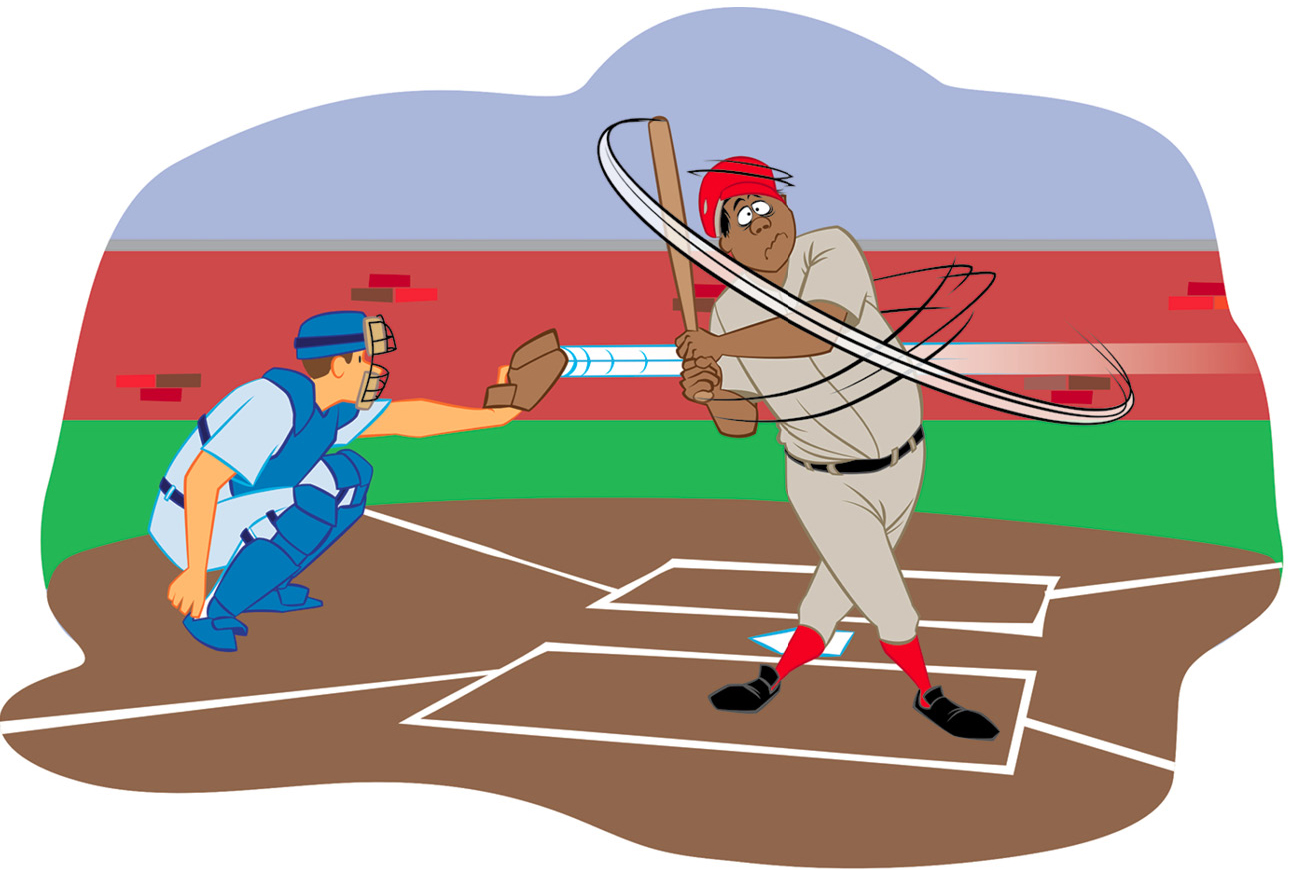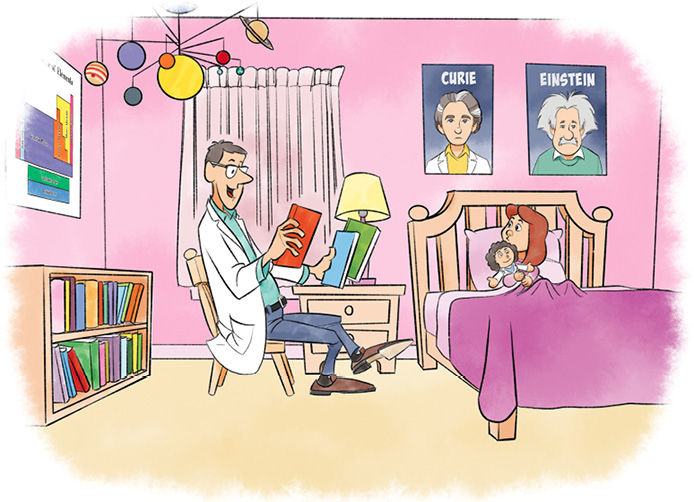Science 101
Q: How Can I Foster Scientific Literacy in My Students?
A: I’m so glad you asked that question! I’m glad because fostering scientific literacy is the most important thing you can do when teaching science. It’s more important than understanding about magnets or the phases of the Moon or plant growth or the weather. Scientific literacy will be much more useful in the long run, and it will be much more empowering.
The first thing to keep in mind is that there are two parts to science. One part—the part which is all that most students first think of as science—is a collection of facts. The other, more important part is science as a process for acquiring new information or new knowledge. It is knowing about this process that is key to understanding why science is so reliable—and so essential if you want to find out what’s really going on or what’s going to happen.
What do individuals need to know and be able to do in order to use science as a tool for individual and collective decision-making? It’s not productive to define scientific literacy in terms of any particular set of facts. For one thing, whatever science we teach will be only a tiny fraction of the body of knowledge in that subject. Even an expert in, say, biology, is really expert only in her/his narrow specialty. Knowledge is advancing at such a pace that even the experts cannot keep up with all the advances outside their specialties. This means that any real issue that our students—future voting citizens—will vote on will likely involve some science that goes well beyond whatever science they learned in school. And, as they age, that formal science instruction recedes further into the past, and less and less of that information is retained. Consequently, hardly any of us is sufficiently well informed to be able to reach a definitive, independent conclusion on a single scientific issue, whether it is climate change, genetic engineering, or sustainable energy sources.
So what happens? The result of this is that we have to rely on experts—those who have specialized training to do things like repair our cars, address our medical issues, or research the issues facing the world, such as climate change or a potential asteroid impact on the Earth. But how do we evaluate the experts? How can we distinguish between the true expert and the quack? How do we regard scientific evidence?
It is neither possible nor necessary for the general population to have detailed scientific knowledge across a range of disciplines. Instead, what is important is scientific awareness—an understanding of what the scientific enterprise is about and how we know that our information is correct, i.e., what it means to establish a scientific fact.
What it means for people to be scientifically aware is that they base their opinion on facts, observable evidence, and consensus of experts, rather than on prejudice or assumptions; they should be willing to change their opinions based on new evidence, understand cause-and-effect relationships, and, most importantly, appreciate how science is done—in particular, understand the role played by observation and experiment in establishing a scientific conclusion; they should know what the terms scientific theory and scientific fact mean.
Your students might not yet be ready for all of this, but we can at least start them off with an engaging investigation to get them thinking scientifically. Engaging science begins with questions about things that are familiar and interesting to students. Students should ask questions about the natural world; plan investigations; gather, organize, and interpret data; look for explanations; apply scientific knowledge; and communicate their discoveries. That last part—communication—is often lacking in science lessons, and yet it is perhaps the most important and interesting part in modeling the way real scientists work. Here’s an activity that emphasizes post-experiment discussion.
Reaction Time Activity
There are two parts to this activity—a fun experiment and a discussion about what’s going on. As you’ll see, the discussion is where we encounter most of the science.
Reaction time is extremely important in life (see Figure 1). As adults, when we’re driving, we must react as quickly as possible when, say, another car veers in front of us or when a deer jumps out in front of the car. Fast reactions are also useful to children. A ball is about it hit a child, and we shout, “Watch out!” and the faster they can react, the more likely there will be a happy outcome. Fast reactions can also be useful when children are riding bicycles and encounter unexpected obstacles. Many sports require good hand-eye coordination and quick reactions.

I’ll give you a few ways that students can measure their own or one another’s reaction times. One is a website that simulates how fast you can, say, hit the brake by seeing how fast you can click the mouse when you see a light change (see Online Resources). The website has the person do the test five times in a row and reports the average response time (see Figure 2). Be sure to discuss with students the advantages of running the test multiple times and taking the average. If your students are too young to talk about averages, at least point out the variation in the values and have them suggest possible reasons for those variations.
That website tests visual reaction time. There’s another website (see Online Resources) for testing reaction time in response to a sound. Students should also try this multiple times and either determine the average (with your help) and/or discuss the variation in values. Remember that, to get the average, you add up all the numbers and then divide that sum by the number of numbers.
Here’s a non-internet, hands-on way to have students test reaction time. The student to be tested stands or sits near the edge of a table, resting their elbow on the table so that their wrist extends over the side. The tester (another student) holds a meterstick vertically in the air between the student’s thumb and index finger, but not touching. Align the zero mark with the participant’s fingers (see Figure 3). The participant should indicate when they are ready. Without warning, the tester releases the ruler and lets it fall. The student must catch it as quickly as possible as soon as they see it fall. Record in centimeters the distance the ruler falls. Repeat this procedure several (5 or 10) times and, if appropriate for your grade level, determine the average.


Next we want to know how long it took for the meterstick to fall that distance. To help you with that, I’ve made a table which lets you instantly convert from distance fallen to elapsed time (see Online Resources). A couple of other things you can investigate…
Do students get better (faster) with practice? Try it again a half hour later or the next day, or on multiple days, and see if students get faster. Do athletic students have faster times than more sedentary students? You can also compare the average response time of girls vs. boys. Some previous tests have found that males have, on average, faster response times than females. Is that the case in your class? You could discuss possible evolutionary reasons why that might be the case. Did differences in male/female roles in our distant ancestors’ societies make fast response times more important for one sex over the other?
When everyone is done determining their response times, it’s time for the important discussion about the relevant science. Science is all about finding explanations for observed phenomena. So ask students to explain why there is a delay between when the stimulus occurs (light, sound, or dropped ruler) and when they react. What’s happening during that time? Have students first discuss these questions in groups among themselves. See if they can make a list of everything that has to happen before they can respond. If they need a hint, you can say, “Think about what the brain must do so that you can catch the falling stick.” You can also point out that there are different parts of the brain that serve different purposes. There’s a part that receives signals from the eyes (the visual cortex), a part involved with decision-making (the front part, or lobe), and a part that controls movement (the motor cortex).
After they’ve had enough time to discuss the process, ask a representative from each group to tell the class what their group thinks is going on.
What’s happening?
Catching a dropped meterstick begins with the eyes watching the stick in anticipation of it falling. After the stick is dropped, the eyes send a message to the visual part (or cortex) of the brain, which receives information that the meterstick is starting to fall. The visual cortex sends a message to another part of the brain (the cerebral cortex), which is where the brain makes a decision about what to do in response to what you observed. That’s the part that decides that you need to catch the stick. So it sends a message to the motor cortex, which, in turn, sends a message down the spinal cord and out into an arm to the muscles in the hand/fingers. The final process is the contraction of the muscles as the fingers grasp the stick (see Figure 4). All of these processes involve individual nerve cells that transmit messages to other nerve cells. And all of this takes time.

But it doesn’t take much time. Electrical signals travel along the nerve cells at about 220 miles per hour (100 meters per second). The time it takes from when you see the stick start to fall to when your finger muscles move to catch it can take somewhere between 150 and 220 milliseconds (thousandths of a second). That’s a little less than a quarter of a second. All of this brain activity and movement has to occur every time a situation like that in Figure 1 arises.
Notice that this article was not about memorizing facts. Remembering facts is not, by itself, science. Science is a process for learning new things, and here we used a reaction-time experiment as a vehicle for seeing how we can investigate things without doing a lot of memorizing. Exploration and finding explanations are the heart and soul of science. And we also made connections to real life, as in Figure 1.
Remember: With great reaction times comes great response ability.
Never stop learning. ●
Online Resources
Audio Reaction Time Test (After five minutes of use, you need to sign up.): https://gizmos.explorelearning.com/index.cfm?method=cResource.dspView&ResourceID=43
Distance-Time Table: https://msb-science.com/distance-time-table.xlsx
Visual Reaction Time Test: http://www.getyourwebsitehere.com/jswb/rttest01.html
Matt Bobrowsky is the lead author of the NSTA Press book series, Phenomenon-Based Learning: Using Physical Science Gadgets & Gizmos. You can let him know if there’s a science concept that you would like to hear more about. Contact him at DrMatt@msb-science.com
Literacy Teaching Strategies Elementary



